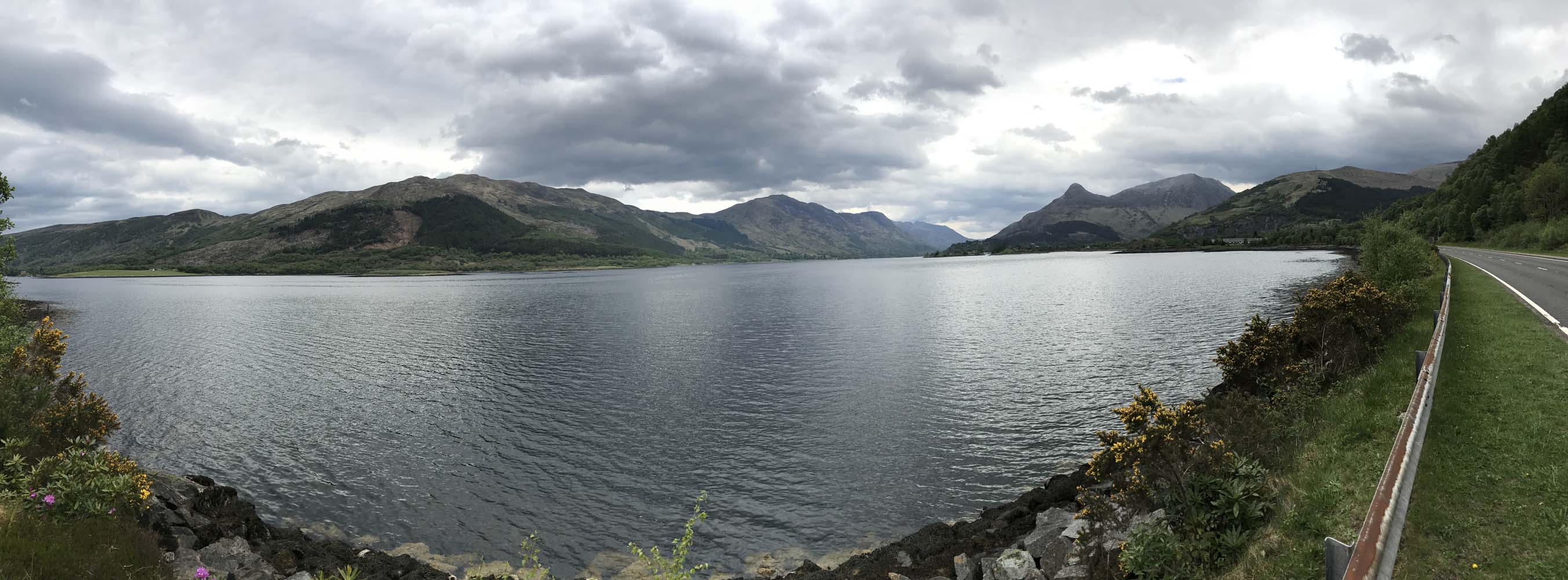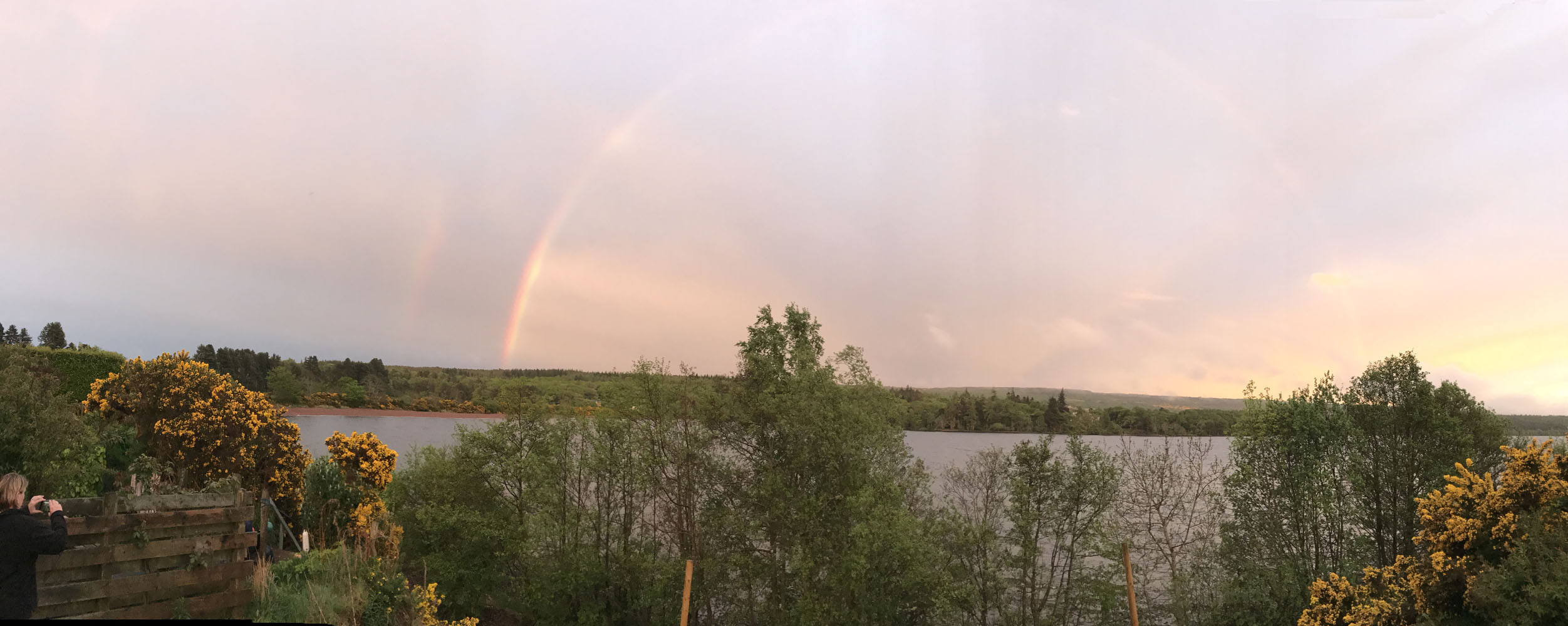There are three videos, three panoramas and 10 photos below. You’ll enjoy them all.
If you’re just joining this story, we’re touring Scotland. It is a big tour and a grand place. It is worth your consideration.
We’re touring all of Scotland. This is what we are driving:

For scale, each letter above the car is the width of a quarter. Place them edge to edge, that’s the size of our car. It holds everything we brought to the UK, but only just. And all of the things must be configured in a particular fashion to fit. But we have legroom, it is pretty easy on gas mileage and our Vauxhall Adam cranks every time. Today, it got driven a lot. And we stopped and started our way through a great deal of this magnificent countryside today.
Here are a few clips from this morning’s drive:
The day’s first panorama was at your standard issue, beautiful Scottish loch. Click to embiggen:

You could get used to this sort of thing.
We also hit the beach!

This is Udrigle Beach. White sand, mountain views, odd smells. There were a few people enjoying the beautiful springtime weather. (We’ve been lucking out on the weather so far.) There were a few dogs digging in the sand. I had a nice little chat with an elderly woman who’d walked down from the nearby lodge to sit and soak up the sun. It was a lovely day, she said. She said it again to someone else, so you know she meant it.

And here’s a beach panorama. Click to embiggen:

We watched the ocean from the roadside for some time today, too:

I realized I tend to take a lot of panoramas with water as a main focal point. So I changed this one up and put a person in one corner of the shot. Look how The Yankee is peering through her camera allllll the way across the shot. Click to embiggen:

We also saw this today:

Let me explain.
We found that gorge along the way. This wasn’t one of our planned stops. It was just a name on the map. But you have to learn to be curious about names on maps. That curiosity often rewards you.
Down from the Victorian-era suspension bridge there is a viewpoint, where you see the gorge from a better perspective:

Then we saw a castle:

And you know what that means, right? Castle selfies:

I put the details of the ruins into a video package which is conveniently located here:
I don’t know how the routines in your life treat you, but we seldom get to take castle selfies, so we took another:

And now we are in Overscaig, which is about the most middle of nowhere place you can ever be. Over the last few days locals have been asking us our next stop. We’d tell them and they all said, “Where is that?” No one knows. And that’s a shame. It is simply stunning up here:

We’re dining in with our bed and breakfast hosts tonight. I have some more videos to show you after that. I’ve discovered a new technique that I’ll no doubt use far too often …

























